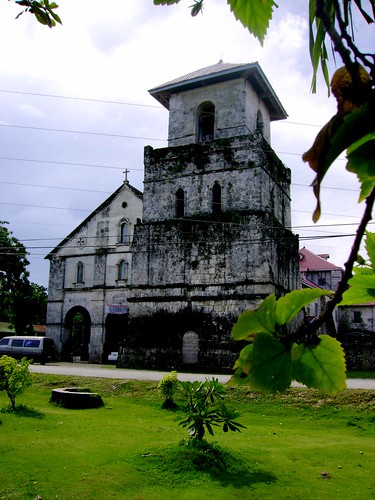
The mission of Baclayon was established by two Jesuits Juan de Torres and Gabriel Sanchez who arrived in Bohol on 17 November 1596. They came from Cebu. Torres reports that he could not find a decent place to celebrate Mass, there wasn't even a servicable table in the dwelling they stayed in. The Jesuit convinced the inhabitants to build a church, which they accomplished in no time. This was most likely a bamboo and thatch church. Baclayon served at one time as the residentia or center of the Bohol missions, where the superior resided. Baclayon was one of two towns that did not join the Diwata revolt (1621), remaining steadfast in the Christian faith. Despite claims that the present stone church in Baclayon is the oldest in the Philippines, evidence places the construction of the church to 1727. The belief that the church was built in 1595 may have come because of a 19th century report by the Recollects that the mission was founded in 1595; but the same report lists two other dates 1593 and 1594. The date 1595 inscribed on the church façade is a later addition. The adjoining but separate tower may have been started by the Jesuits, but it was completed during the administration of the Recollects, ca. 1777 as a stone inscription on the tower indicates. The inscription was recently defaced. The church complex was fortified with a wall built by the Jesuits. The walls' coral stones were used by the Recollects when they built a new wing of the convento in 1872.
This church is source of local pride and unity among Baclayanons, as the lady tour guide in the parish museum told her visitors, “Baclayon church is our heart”, for them it’s not only the symbol of religious unity among the Catholic residents, it stands for their way of life, traditions passed down through the years.
Writers from past and present wrote about its timeless beauty. I like the church’s simplicity and elegance, its massive bell tower is an imposing structure – I’ve never seen nothing like it before.
The Retablo’s have icons of Recollect devotion, but the Jesuit’s, who erected the church, the convent and the bell tower left their familiar motto, Ad Majorem Dei Gloriam, in the main altar, proof of their hard pioneering labor establishing Baclayon.
The museo is full of relics! The museo, once the convento is in itself a monument of the town's glorious past. It defies the elements as it continues to serve its visitors and residents.
The painting in the ceiling was a recent addition, sometime 1980’s if I’m not mistaken, some scholars believes that the artwork is out of place.
I appreciate the restoration so much – hardly anything was changed, it’s a great example that old structures with historic value need not be upgraded or beautified or rebuilt, it just needs little care and attention that’s all.
Viva La Parroquia la Purisima Concepcion de Maria!



No comments:
Post a Comment